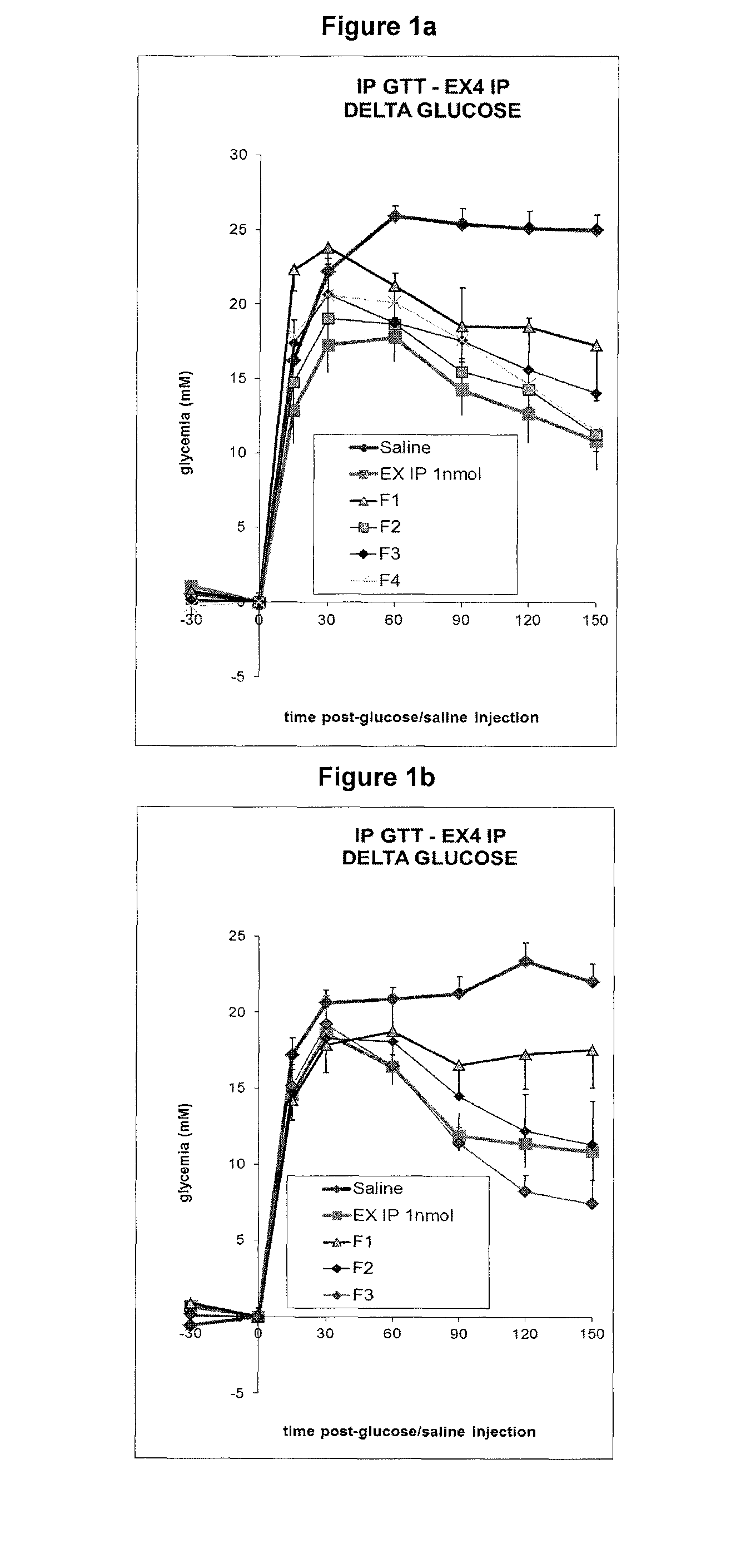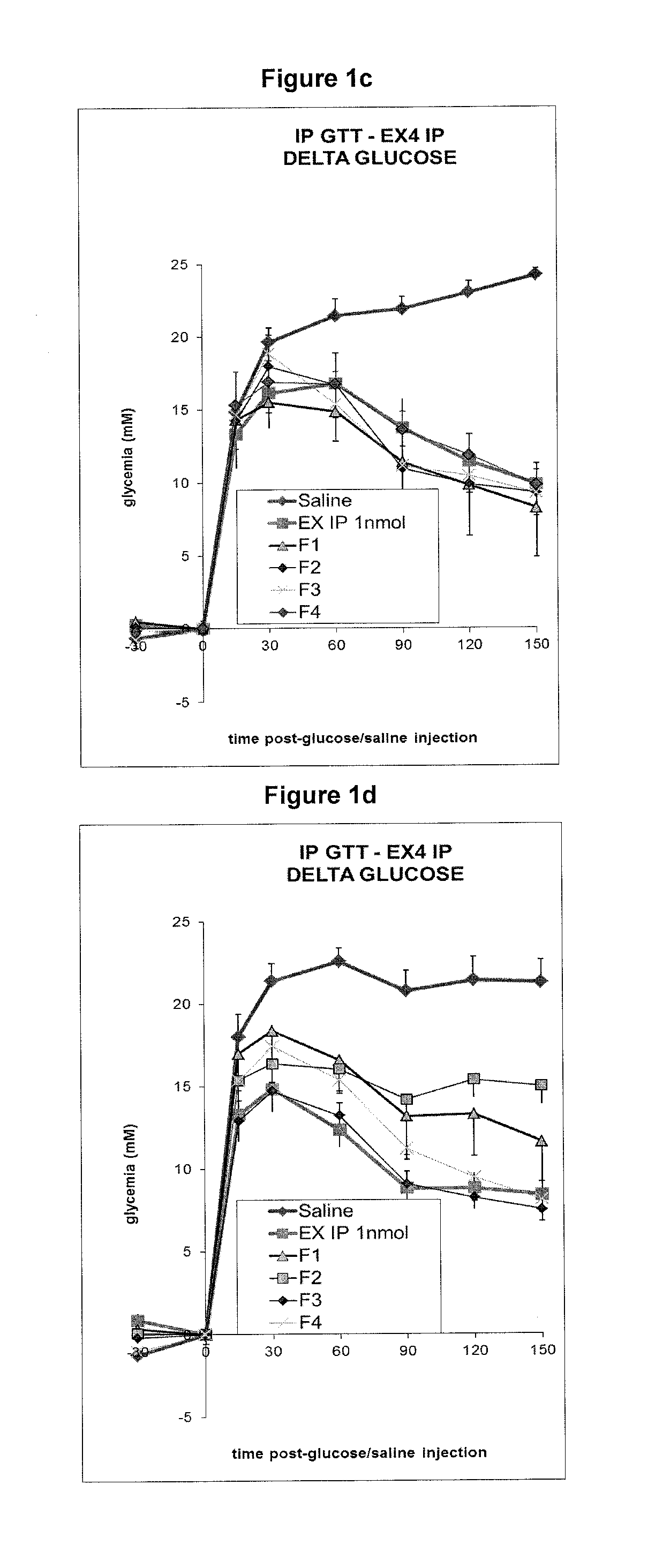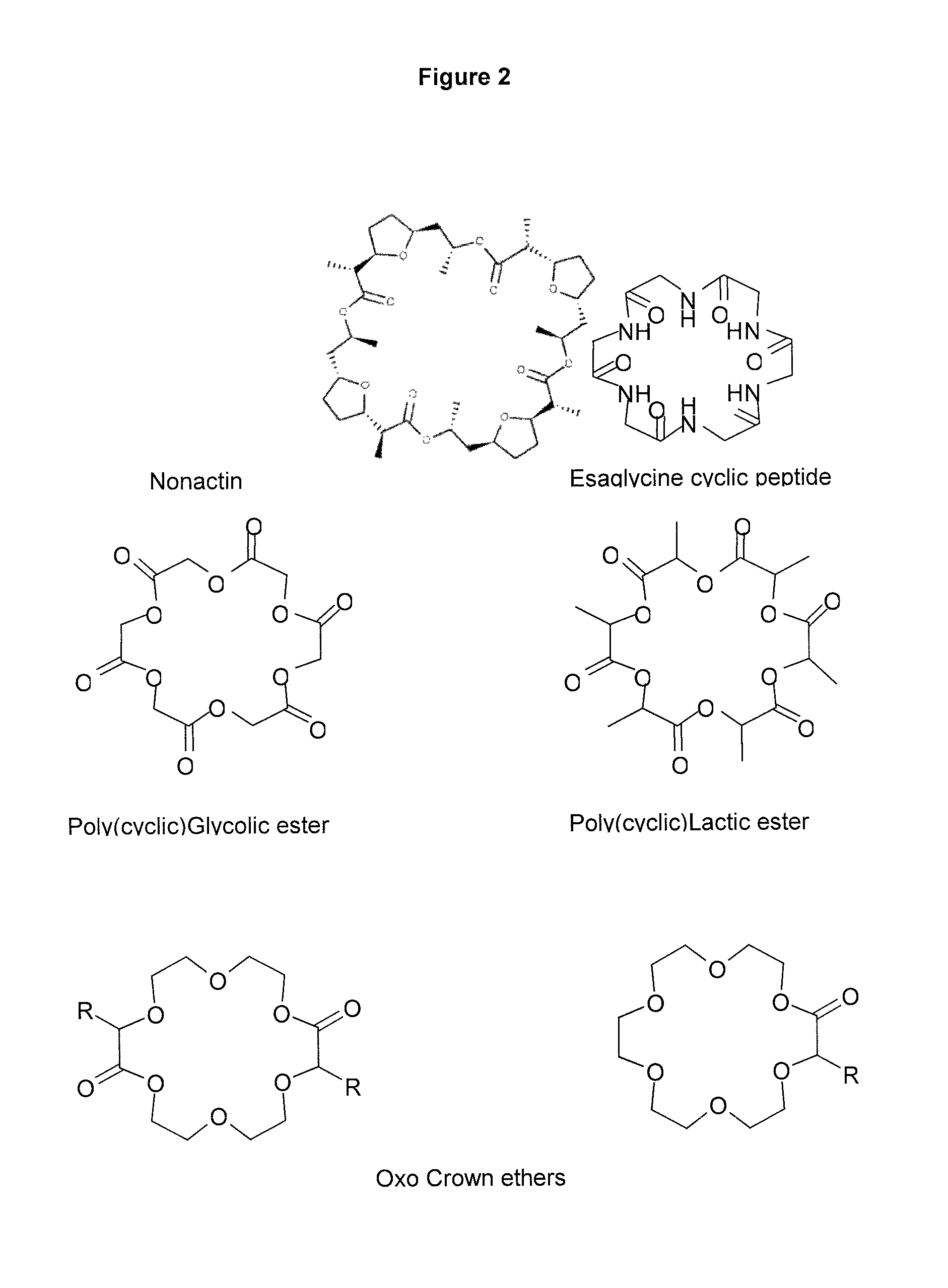Mucosal delivery of drugs
a technology of mucosal lining and drug delivery, which is applied in the direction of metabolism disorder, extracellular fluid disorder, peptide/protein ingredient, etc., can solve the problems of irritation of the various mucosal linings, poor overall bioavailability of mucosal lining, and the delivery of larger molecules
- Summary
- Abstract
- Description
- Claims
- Application Information
AI Technical Summary
Benefits of technology
Problems solved by technology
Method used
Image
Examples
example 1
General Procedures for Preparation of Formulations
[0192]STEP 1: Alternative Peptide Solubility Improvement by Desalting
[0193]Peptides were optionally desalted by Reverse Phase High Performance Chromatography (RP-HPLC) (solvents were water and acetonitrile in the presence of 1% acetic acid) and lyophilized (i.e., freeze dried at less than room temperature). Depending on the pI of the molecule, the molecule is either utilized as it is in lyophilized form, or when required, re-dissolved or suspended in water or water / acetonitrile mixtures. The pH of the obtained solution or suspension was then brought to a desired value ranging from 4 to 7.5 such that the pH was sufficiently different from the pI of the molecule to insure solubility in various solvents employed in subsequent counter ion exchange and / or complexing reactions. When the desired pH was reached, the obtained solution or suspension was if necessary filtered through a 0.45 μm filter and lyophilized at this given pH ranging fro...
example 2
Exemplary Compositions
Components (a)
Component “Oleic”:
[0206]520 mg DecanoylGlycerol (DG)[0207]160 μl oleic acid[0208]200 μl nonanoic acid
Component “Oleic2”:[0209]260 mg DG[0210]260 mg OctanoylGlycerol (OG)[0211]160 μl oleic acid[0212]200 μl nonanoic acid
Component “Oleic3”:[0213]260 μl monolinolein[0214]260 mg OctanoylGlycerol (OG)[0215]160 μl oleic acid[0216]200 μl nonanoic acid
Component “Monolinolein”:[0217]65 mg DG[0218]65 mg OG[0219]90 μl monolinolein
Component “Ricinoleic2”:[0220]130 mg DG[0221]130 mg OG[0222]80 μl ricinoleic acid[0223]100 μl nonanoic acid
Component “Ricinolein2”:[0224]130 mg DG[0225]130 mg OG[0226]40 μl ricinoleic acid[0227]50 μl nonanoic acid[0228]90 mg monolein
Compositions (Above Components (a)+Components (b))
Composition “Lipoleic”:[0229]66.3 mg distearoyl phosphatidyl choline (DSPC)[0230]7.2 mg distearoyl phosphatidyl glycerol (DSPG)[0231]26.7 mg cholesterol[0232]200 μl composition “oleic”
Composition “Lipoleic2”:[0233]198.9 mg DSPC[0234]21.6 mg DSPG[0235]80.1 ...
example 3
Glycemia (mM) as a Function of Time (Minutes) Upon Exendin-4 IP Injection or Sublingual Administration
[0255]All groups received NaCl 0.9% solution and a Glucose solution. Group “saline”: 5 mice treated only with the glucose solution. Group “IP”: 5 mice injected IP (intraperitoneal) with 1 nmol exendin-4. Groups F1 to F4: 5 mice treated with formulations F1 to F4 (sublingual administration). In all formulations, the peptide-crown ether complex in propylene glycol (12 equivalents crown ether, for example formula IX) was incorporated into compositions described below. The peptide crown complex was obtained by dissolving exendin-4 in a mixture of propylene glycol and crown ether. Typically, for a 1 mM final concentration of exendin-4 in formulation (2 μl administration, 2 nmol), 0.60 mg exendin-4 (120 nmol) were dissolved in a mixture of 0.67 mg crown structure (formula IX, 1440 nmol, 12 equivalents) and 14 μl propylene glycol. The obtained solution was finally combined with 106 μl of t...
PUM
| Property | Measurement | Unit |
|---|---|---|
| temperatures | aaaaa | aaaaa |
| temperature | aaaaa | aaaaa |
| temperature | aaaaa | aaaaa |
Abstract
Description
Claims
Application Information
 Login to View More
Login to View More - R&D
- Intellectual Property
- Life Sciences
- Materials
- Tech Scout
- Unparalleled Data Quality
- Higher Quality Content
- 60% Fewer Hallucinations
Browse by: Latest US Patents, China's latest patents, Technical Efficacy Thesaurus, Application Domain, Technology Topic, Popular Technical Reports.
© 2025 PatSnap. All rights reserved.Legal|Privacy policy|Modern Slavery Act Transparency Statement|Sitemap|About US| Contact US: help@patsnap.com



